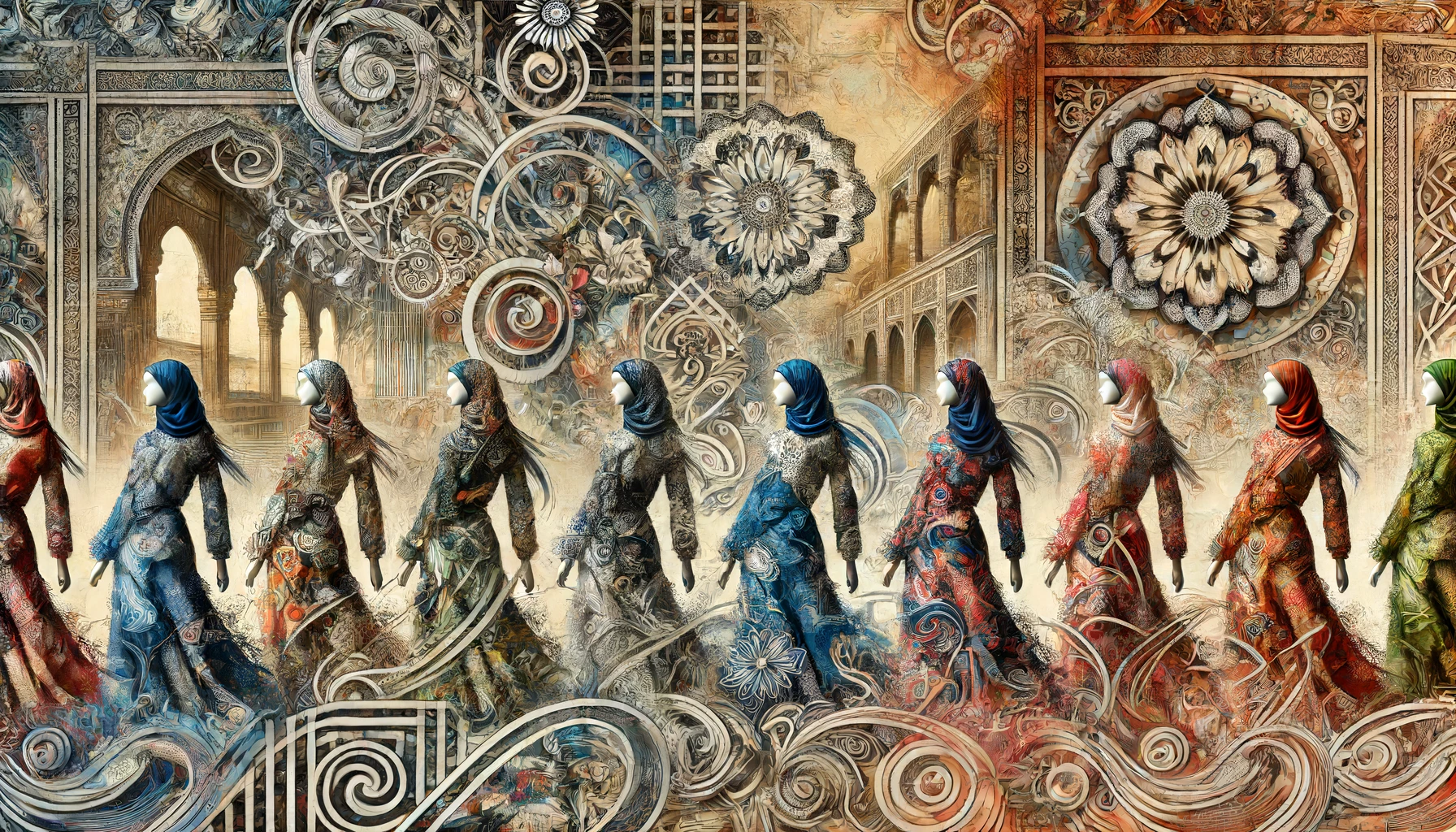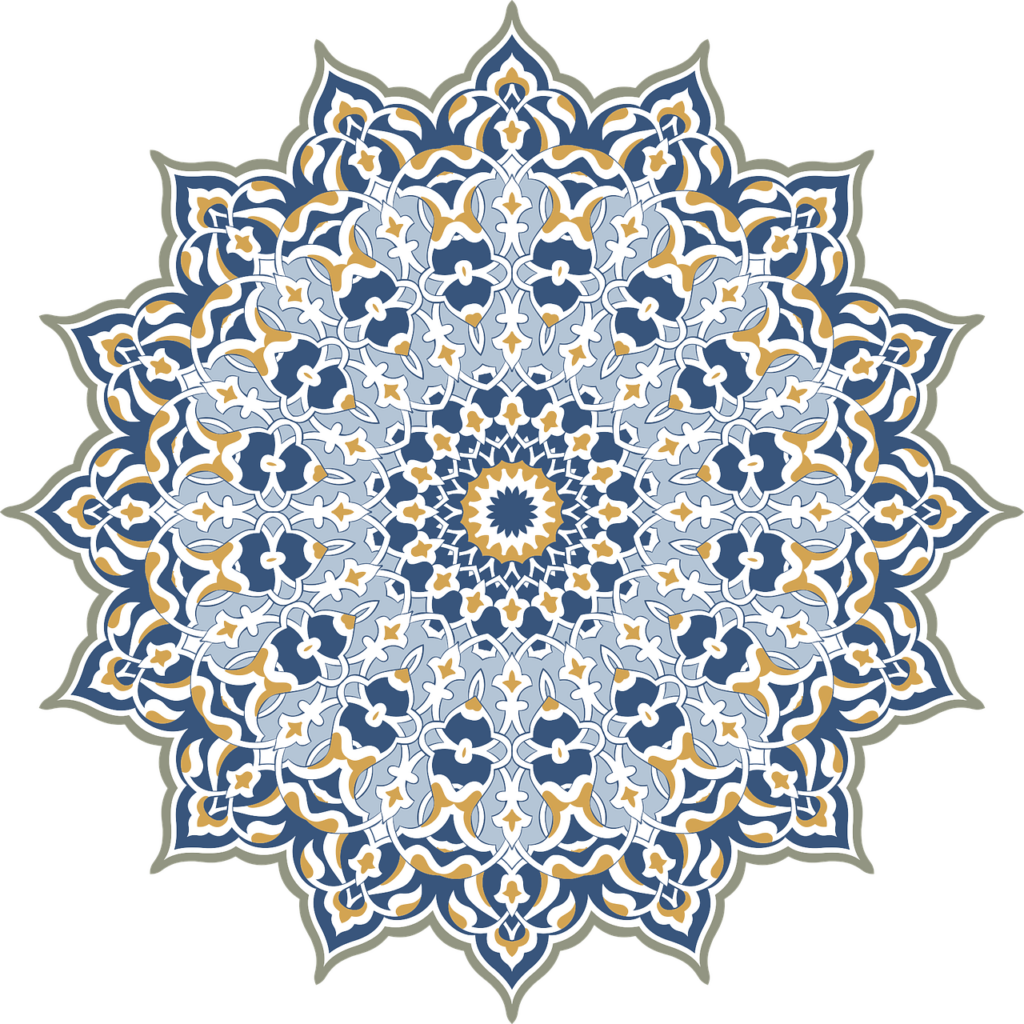
The Seam Ripper Is Your Friend
No sewist wants to talk about it—but every sewist does it………

Arabesque, derived from the Italian term “arabesco,” meaning “Arabian,” is a captivating and intricate floral-geometric pattern originating from the East. This design is characterized by its intertwining lines, spirals, calligraphy, plant tendrils, and stylized flowers, creating a dense and richly detailed pattern. For centuries, arabesques have adorned architecture, decorative arts, and fashion, enchanting observers with their endless complexity.
Historical significance and features of arabesque
In Europe, an arabesque typically refers to a pattern of plant motifs, while designs featuring inscriptions and geometric patterns are known as moresque. Broadly speaking, the term “arabesque” encompasses any complex, intricate pattern with an Eastern motif. A hallmark of arabesque is its continuity, with no distinct beginning or end, as all elements seamlessly connect into a unified whole. These designs can be multicolored, contrasting, or monochromatic, often achieving their elaborate appearance through varied fabric textures.

Historical significance and features of arabesque
In Europe, an arabesque typically refers to a pattern of plant motifs, while designs featuring inscriptions and geometric patterns are known as moresque. Broadly speaking, the term “arabesque” encompasses any complex, intricate pattern with an Eastern motif. A hallmark of arabesque is its continuity, with no distinct beginning or end, as all elements seamlessly connect into a unified whole. These designs can be multicolored, contrasting, or monochromatic, often achieving their elaborate appearance through varied fabric textures.
The name “arabesque” itself, translating from Italian as “Arabian,” traces its origins to the Arab East during the Middle Ages. The pattern gained prominence in Byzantium, where it was used to decorate manuscripts. By the 17th and 18th centuries, arabesque motifs spread to Europe, embellishing fabrics and even garden designs. These patterns became popular in printed textiles used for clothing.
For Muslims, arabesque symbolizes the “infinite fabric of the universe,” a concept that reflects the pattern’s continuous and boundless nature. Europeans, on the other hand, referred to it as “fear of empty space” due to its intricate and crowded designs. The vivid and unique nature of arabesque patterns quickly caught the attention of fashion designers, ensuring its lasting presence in the fashion world.

Arabesque in contemporary fashion
The renowned fashion house Balmain, established by Pierre Balmain, has notably embraced arabesque as a signature element in its collections. The brand frequently features this intricate pattern, making it a staple in their designs. In the spring-summer 2012 collection, Balmain showcased various interpretations of arabesque, including high-waisted cropped trousers for the bold and loose, pearl-colored trousers with a tone-on-tone glossy arabesque for a more understated elegance.
Eastern motifs, with their elaborate ornamentation, vibrant colors, and distinctive cuts, have long captivated the fashion world. The enduring appeal of arabesque prints is evident as they continue to appear in the collections of renowned designers year after year.

Conclusion
Arabesque patterns, with their rich history and intricate designs, have firmly established themselves as timeless elements in the world of fashion. Their seamless blend of cultural significance and visual allure ensures that these Eastern motifs will continue to inspire and enchant fashion enthusiasts globally. Whether through bold statements or subtle elegance, arabesque remains a beloved and enduring trend in contemporary fashion.
share this post:

No sewist wants to talk about it—but every sewist does it………

You’ve carefully cut the fabric. You’ve followed every step of the pattern instructions. ……